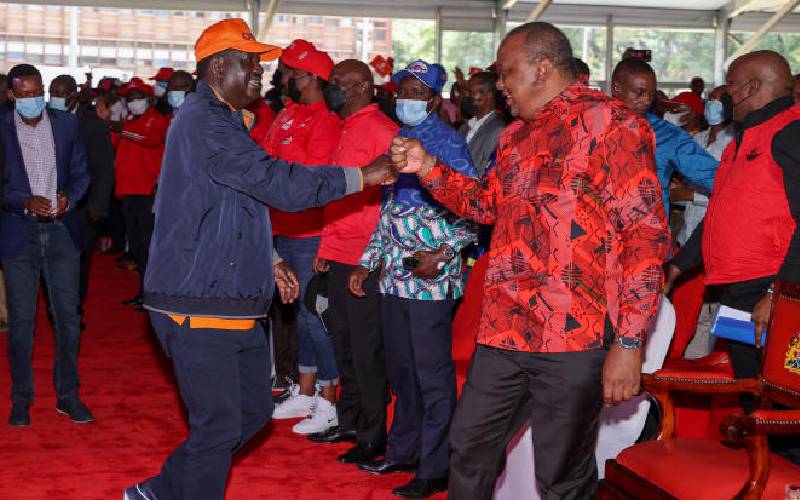×
The Standard e-Paper
Join Thousands Daily

President Uhuru Kenyatta with ODM leader Raila Odinga at the Kenyatta International Convention Centre in Nairobi City County during the Jubilee Party's National Delegates Conference. [Standard]
Sixty years after their fathers walked the country into independence, President Uhuru Kenyatta and Opposition leader and ODM leader Raila Odinga yesterday presented a united front, setting the stage for possibly forming a government together like their parents did.